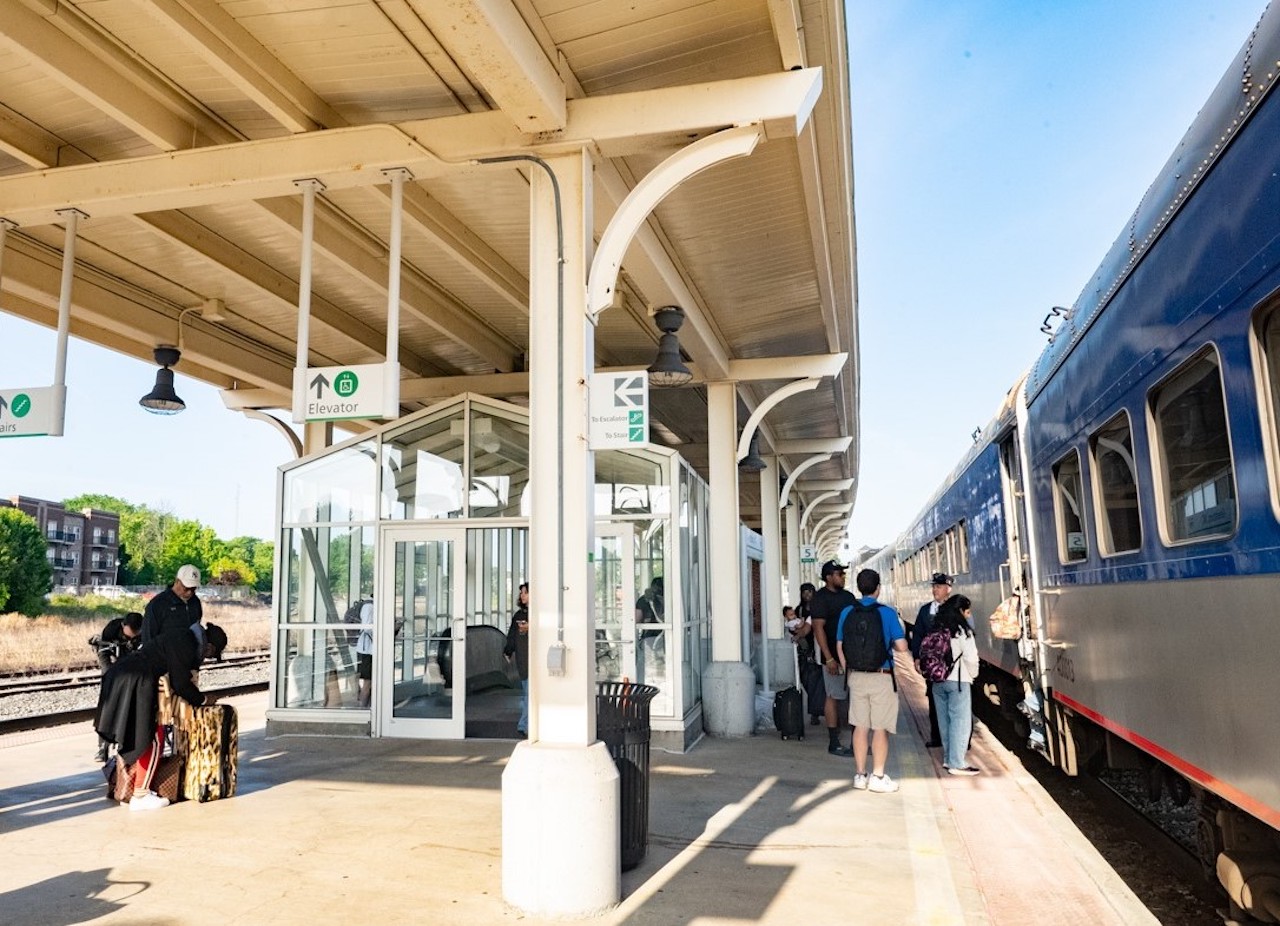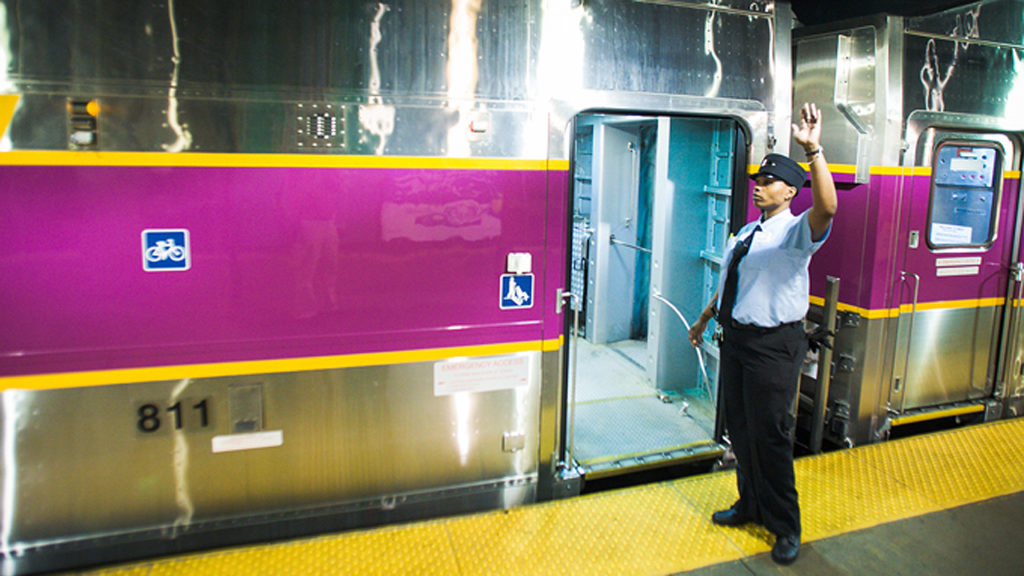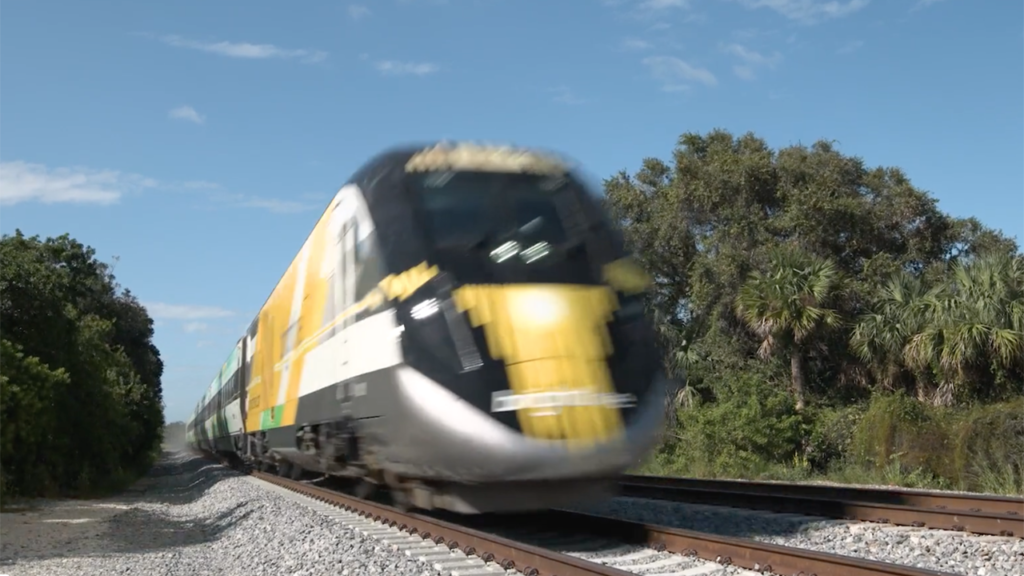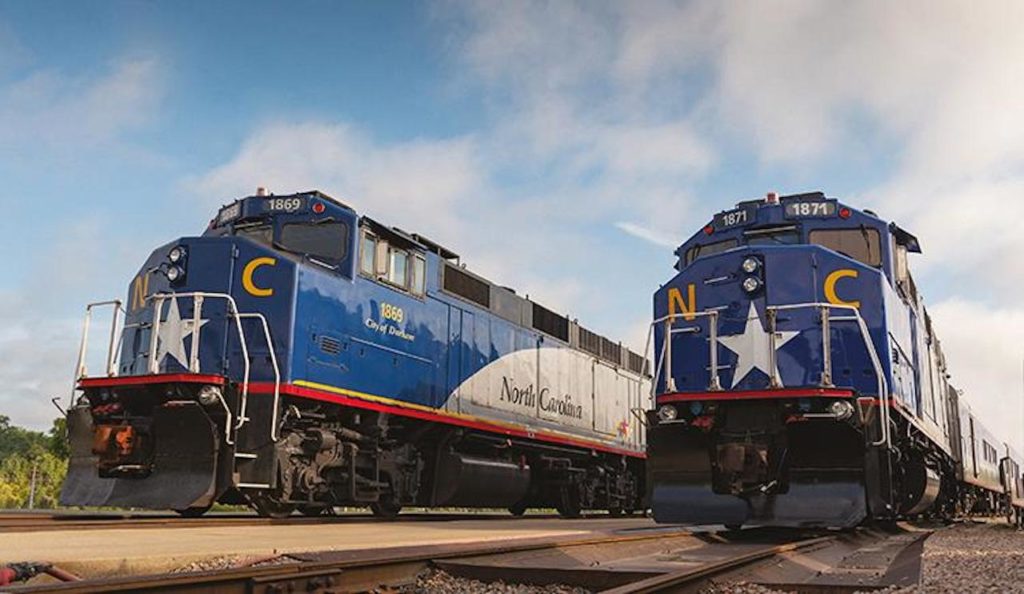
Transit Briefs: MBTA, Brightline, NC By Train
Written by Carolina Worrell, Senior Editor
Passengers wait to board a Piedmont train at the station in Greensboro N.C. (NC By Train)
The Massachusetts Bay Transportation Authority (MBTA) issues a request for information (RFI) to gather views on plans to replace its existing Operations and Maintenance (O&M) contract and considers increasing service on the Fairmount Line with a new fleet of electric battery-powered trains. Also, Brightline cuts its 2024 ridership forecast; and NC By Train ridership continues to grow.
MBTA
MBTA on March 15 issued an RFI to gain feedback on plans to replace its existing O&M contract, currently obtained by Keolis, for the Boston to Eastern Massachusetts and Rhode Island rail network, according to a Partnerships Bulletin report.
“There have been significant developments in passenger railroad technology and operations worldwide since the current structure was developed, and MBTA is considering whether different contractual structures may better serve the communities of Massachusetts,” the RFI says.

According to the report, MBTA is considering structures such as design, build, finance, operate and maintain (DBFOM) to be used for fleet replacement and service modernization, as the agency “looks to cut carbon emissions through increased electrification.”
The deadline for RFI responses is April 19, 2024, with one-on-one meetings with interested parties scheduled to take place in May.
In related news, MBTA is considering a proposal to “dramatically increase service on the Fairmount Line with a new fleet of electric battery-powered trains before the end of 2027,” according to a StreetsblogMASS report.
Under a proposal described in bid documents that the agency posted March 15, the Fairmount Line would move closer to a rapid transit style of service, with trains that would arrive every 20 minutes on weekdays and every 30 minutes on weekends.
Under the current Fairmount Line schedule, diesel-powered trains arrive every 45 minutes on weekdays and every 90 minutes on weekends, according to the StreetsblogMASS report.
Keolis, according to the report, has submitted a proposal “to deliver 20-minute frequency, decarbonized service on the Fairmount Line.”
According to the StreetsblogMASS report, Keolis is proposing to “procure new battery-powered trains in consultation with MBTA, build a new light-maintenance facility on MBTA property, and operate and maintain the new vehicles.”
The documents, StreetsblogMASS reports, also suggest that implementation could be well under way before June 2026, when the current operations contract with Keolis will be up for renewal.
“The term of the contract is from contract execution until June 30, 2026. The contracted vendor will initiate the project and ensure that it can be transitioned to another vendor at any date following June 30, 2026, with such transition to be conducted at the MBTA’s discretion,” according to the solicitation.
Another section of Keolis’s proposal “specifies that the new electric trains would replace older diesel-powered commuter rail trains that are nearing the end of their useful life,” according to the report.
The new trains would be “in service by the end of 2027.”
Although this particular proposal comes from Keolis, StreetsblogMASS reports that MBTA is opening up bids for other companies to offer similar proposals “to ensure that the process is open, fair, and competitive.”
The proposal “is an example of how new technology can help deliver safe, reliable, improved service, while also helping to achieve the Commonwealth’s climate goals and reduce pollution in an important Environmental Justice corridor,” a Keolis spokesperson told StreetsblogMASS. “Keolis is grateful for the partnership of the MBTA and their consideration of this proposal.”
Brightline
Three months after Brightline disclosed a 21% decline in projected ridership, Florida’s high-speed rail system is cutting its forecast again, according to a Bloomberg report.
According to the report, the Fortress Investment Group-backed Brightline now anticipates carrying a combined 4.9 million passengers in 2024 on its new long-distance service between Miami and Orlando International Airport and the five-year-old South Florida commuter line between West Palm Beach and Miami.

Service to Orlando began in September, behind an initial target for a January 2023 opening.
According to Bloomberg, the forecast was trimmed by another 600,000 from Brightline’s forecast of 5.5 million in December after an updated study of ridership and revenue.
Projections for when the new rail service will be fully ramped up—2026 for trips between Miami and Orlando—were unchanged, according to bond documents amended earlier this month, Bloomberg reported.
Brightline, Bloomberg reports, expects to reach its projection of eight million passengers in 2026, “even under a more conservative forecast of four million riders this year,” according to an offering memorandum for a $770 million bond remarketing this week.
The rail service carried about 2.1 million passengers in 2023. January ridership grew 51% to 236,263 from the same month last year.
NC By Train
North Carolina’s intercity passenger rail service carried more than 101,000 people in the first months of this year, compared with 83,000 riders in the same two months last year, the North Carolina Department of Transportation (NCDOT) recently reported. That difference represents a 21% increase over 2023 and a 65% increase over pre-pandemic passenger totals of 61,000 in 2019.

According to a recent report by Amtrak, Virginia and North Carolina are among NC By Train’s busiest stations in the Southeast. Boosting that popularity are NC By Train’s Piedmont and Carolinian train services, which provide 10 trips daily between Raleigh and Charlotte with stops at points in between, and the continuation of the Carolinian north with stops in Virginia, Washington D.C. and New York.
“It’s exciting that North Carolinians are using the train service more than ever,” said NCDOT Rail Division Director Jason Orthner. “Investments in expanding service, improving infrastructure and advancing new projects is paying off, and the continued growth in NC By Train ridership shows that.”



